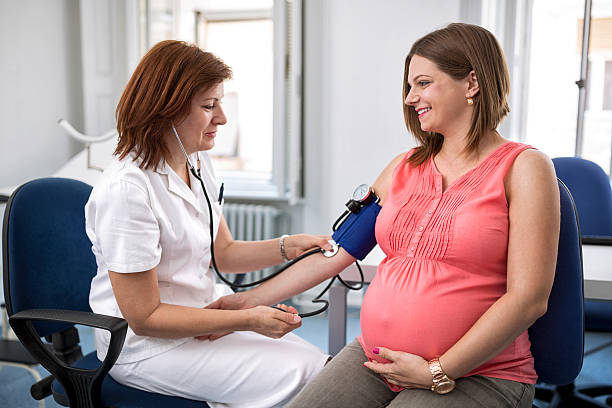The #1 Rated Blood Sugar Formula
Hypertension Induced by Pregnancy

Pre-eclampsia is a serious condition that can occur during pregnancy, where there is high blood pressure and increased protein in the urine.
Although most cases of preeclampsia are mild and cause no problems, the condition can worsen and be serious for both mother and baby. It can cause convulsions in the mother, which is called "eclampsia," and can affect the baby's growth. If left untreated, it threatens the lives of both mother and child.
Women can have pre-eclampsia and have no symptoms. Therefore, it is important to have your blood pressure and urine checked regularly to detect this condition before it becomes dangerous for the mother and baby. If you have a pre-natal appointment that you cannot attend, it is important to reschedule it.
Pre-eclampsia is sometimes called pregnancy-induced hypertension (PIH), pre-eclampsia toxemia or hypertensive disease of pregnancy.
Get medical help immediately if you are pregnant and have severe abdominal pain, headache, dizziness, vision problems, confusion, nausea or vomiting, or if you experience seizures, sudden swelling of your hands, ankles or face, trouble speaking, numbness or sudden and rapid weight gain.
Who is at risk?
About 3 to 4 out of every 100 pregnant women in Australia and New Zealand develop pre-eclampsia. The exact causes are not known, but you may be at increased risk for preeclampsia if:
- you have chronic hypertension (high blood pressure)
- you suffer from chronic diseases such as diabetes, autoimmune diseases or kidney disorders
- you have had pre-eclampsia before
- You are 40 years of age or older or under 18 years of age
- you are expecting twins or triplets
- your family had a history of pre-eclampsia (e.g., your mother had pre-eclampsia)
- you are very overweight at the beginning of pregnancy (body mass index of 35 or more)
- it has been 10 years or more since the last pregnancy
- you conceived through in vitro fertilization (IVF)
- You suffer from an autoimmune disease such as rheumatoid arthritis.
- If you have any of these risk factors, it is very important to attend regular check-ups to have blood pressure and urine tests.
- severe headaches that do not go away after painkillers
- problems with vision, such as haze or flashing lights
- severe pain in the upper abdomen (just below the ribs)
- Gaga that does not go away after taking antacids
- excessive weight gain due to fluid retention
- general malaise
- If you experience any of these symptoms, contact your doctor or midwife immediately.






